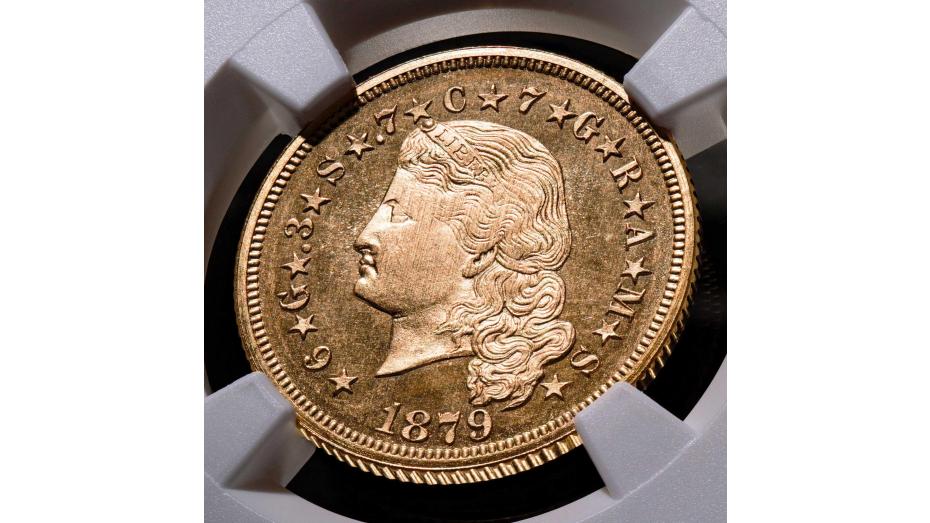A Stellar Experiment in Coinage: The Four Dollar Stella
The Four Dollar Stella coin was produced as a pattern coin for only two years in 1879 and 1880. The coins were never released for circulation and were given only to congressman as examples. It is estimated that only about 480 Stellas were struck, nearly all of which were 1879 Flowing Hair examples.
The coin was proposed by John A. Kasson and was produced in order to be exchanged equivalently with the coinage from the Latin Monetary Union. The LMU was a movement to make a universal European coinage and it lasted from 1865 to 1927. For this reason the coin was inscribed with its composition in the metric system. The hope for the Stella was that it would stimulate international trade and travel between America and Europe.
The obverse of both coins contains the inscription “★6★G★.3★S★.7★C★7★G★R★A★M★S★.” This inscription is meant to be read as the composition of the coin, which is 6 grams of gold, .3 grams of silver, and .7 grams of copper, equaling 7 grams total. This composition did not match the exact LMU standard, which weighed 6.45 grams and contained 5.81 grams of gold.
There are two designs of the Four Dollar Stella; the Flowing Hair Stella, designed by Charles E. Barber, and the Coiled Hair Stella, designed by George T. Morgan. Barber’s obverse depicts Liberty with her hair let down and loosely flowing, whereas Morgan’s design displays Liberty with her hair coiled into a bun atop her head. Both designs showcase the same reverse, which prominently displays a star in the center. Inside the star is inscribed “One Stella” and “400 Cents.” Stella is the Latin word for Star, which is where this coin’s name is derived from. Circumscribed around the star are inscriptions of “United States of America,” “Four Dol,” “E Pluribus Unum,” (Out of many, one) and “Deo Est Gloria” (God is glory).
Although most Stellas were struck from gold and of the four dollar denominations, some experimental version were struck which vary in composition and denomination. Five examples of a Quintuple Stella, with a denomination of $20, were struck in 1879. Instead of displaying Barber’s or Morgan’s designs, these coins depict a slightly modified version of James B. Longacre’s Liberty Head Double Eagle design. The modification on the obverse is the addition of the composition, which reads "★30★G★1.5★S★3.5★C★35★G★R★A★M★S★." The motto “In God We Trust,” on the reverse was also replaced by the phrase “Deo Est Gloria.”
An unverified amount of copper and aluminum Stellas were struck during 1879 and 1880. The 1879 Coiled Hair Variety is known to have 13 copper examples and 5 aluminum examples while the 1879 Flowing Hair Variety is known to have 13 coppers examples and 4 aluminum examples. There are also a handful of 1880 Stellas of both varieties struck from aluminum, but the exact amount remains unknown.
While no circulation examples were struck, the Four Dollar Gold Stella stands out as an attempt to create a new denomination that would influence other countries. After the few pattern Stellas were struck, they were not found to be more useful than already existing gold coins, such as the Half Eagle, Eagle, and Double Eagle.






